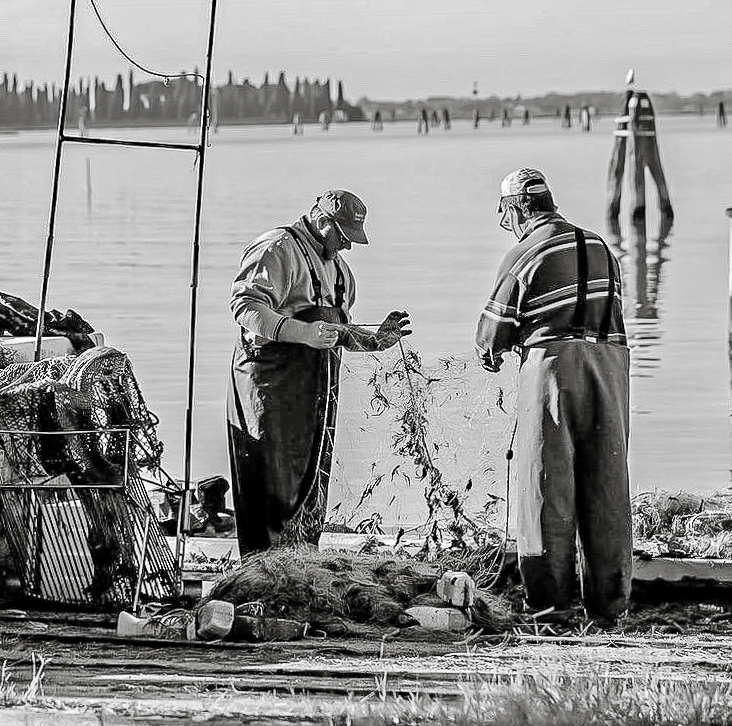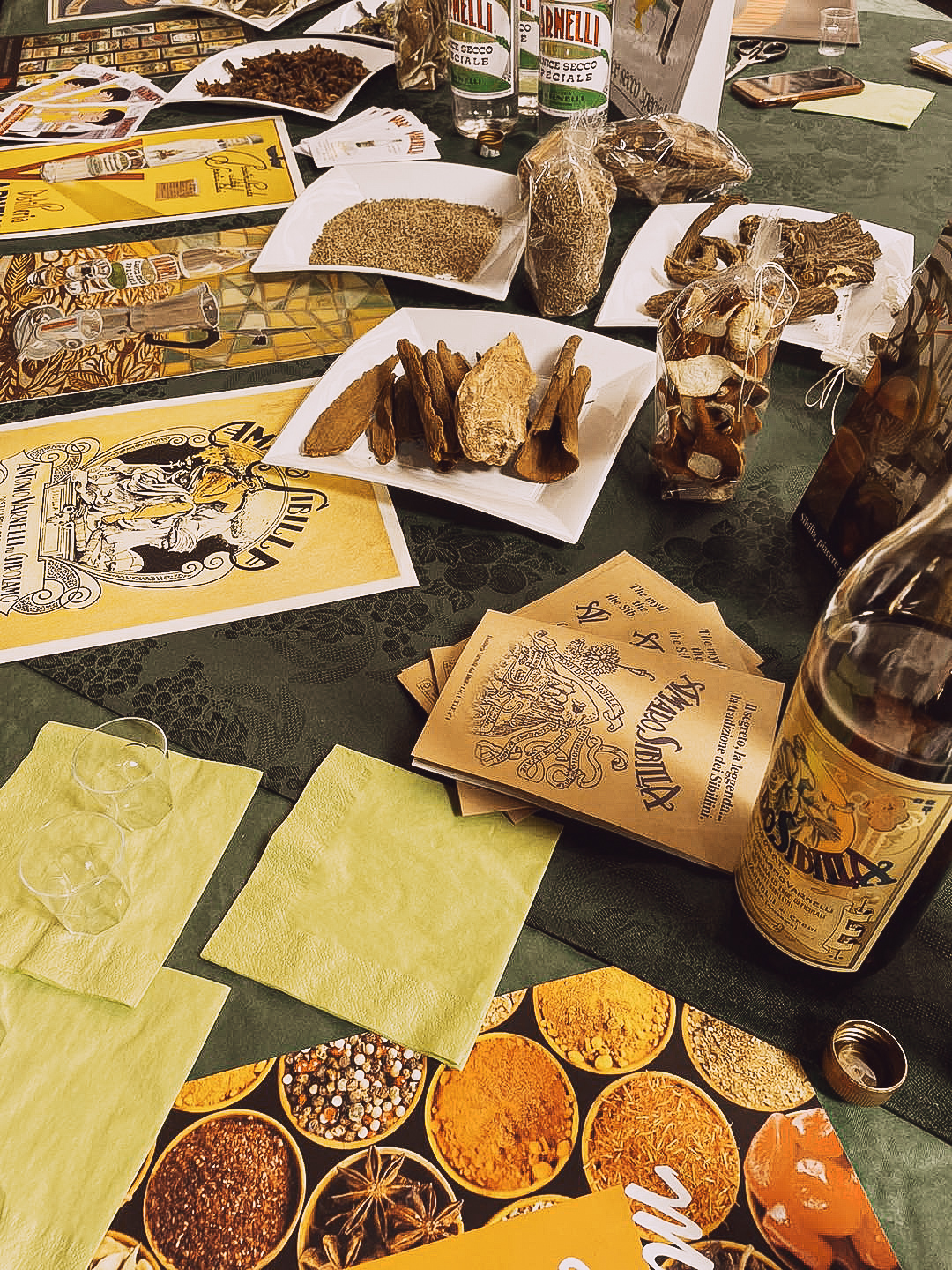The story of our garden was first told in July 2018 as a chapter in the book “First Spritz is free” by Kathleen González. The garden was also mentioned in this article on L’Italo-Americano by Liz Salthouse. And now, we share images of El Brolo, which is the oldest garden in Venice, lovingly taken care of by Grandmother Lina.
In Venice, each garden and plant could tell a story, and the garden I grew up in is no exception. It’s an ancient, inspiring, and energizing garden that taught me, above all, that there are two Venices. And it tells me that the ancient Venice still exists.
Take a look beyond the familiar façades of our town and you’ll discover that there’s a whole private city behind the scenes, consisting of horti conclusi, forgotten courtyard gardens. They hide behind red brick walls and are never visible to passersby. It’s an unknown city where the true vocation and origin of Venice have survived, after all. This unknown city is rather large because private gardens make up almost half the surface of Venice.
Exploring the hidden, private Venice has been my favorite pastime since I was a child. During the long school summer holidays, I used to slip away from the house on hot afternoons and spend hours on end in the cool and leafy courtyard of the Greek Orthodox Church, San Giorgio dei Greci, reading or chatting with friends. Sometimes, I sat on a white marble bench under an olive tree, recalling the stories my father had told me the evening before. He used to tell all kinds of stories, of Venice and Constantinople, spices and Levantine gardens built around exotic and forgotten recipes. As a child, you get the opportunity to bond with the city even deeper, and I did make use of this privilege, exploring every nook and cranny of my neighborhood, which is San Zaccaria and San Giorgio dei Greci. By the time I was ten years old, I had made up my mind that I was going to explore and write about this second, private Venice, the city I couldn‘t recognize in guides or art books for tourists. Venice, this lively, kind and humane city, the last remaining polis of the world as one of my best friends calls her, still exists. Yet, most visitors just don’t know where to start to look for it. In the maze of calli and campielli, one can get lost so easily but then, there’s a red thread to follow, but you must be prepared that it will lead you in a surprising direction.
In my opinion, if you really wish to explore Venice, the first tool you need is a map in your mind consisting of stories opening the doors to this secret, forgotten world, where the authentic Venice has survived.
Venice can be very crowded, but her core is still here, untouched and hiding from prying eyes. Especially my neighborhood, the part of Venice I know best, could tell a few memorable stories. The one I’m telling you here is how you can step back in time in a special garden. It was created in the fourth century AD, which makes it the oldest garden in Venice, and for a few centuries, it was also the largest in town. All you need to do is enter a little red house overlooking a narrow campiello, walk up a white marble staircase, and there it is, lush and green and filled with flowers, just like it must have looked hundreds of years ago.
But first, you must cross a bridge. It’s called Ponte della Canonica, the oldest stone bridge in town built in the year 1170.
Even at 6:00 a.m., sleepy tourists are stopping here, taking pictures of the Bridge of Sighs just ahead, shimmering in a rose-tangerine hue, while the only sound you can hear are martins circling above the city in the balmy morning sun. Without noticing, you just stepped on historical territory, yet, this isn’t clear, for the campo (Venetian square) beyond the bridge looks like an average Venetian al fresco living room, enveloped in a smell of fresh brioche coming from a bakery and bacari-style restaurants, wine bars, and the rustic corner coffee shop. Here, you stop for a minute and watch the barmen arrange tramezzini and chocolatecream filled croissants. This is the type of croissant you will only find in Venice, buttery, warm, soft and crispy at the same time. Yet, you turn towards the archway in front of you, behind which a glowing white and polished church façade demands attention.
While quickly crossing a narrow campo, you don’t notice that little house painted in rosso veneziano —Venetian red, whose windowsills are adorned with geranium and rosemary pots.
Only for a second do you stop to try to find out where that scented cloud of heavy vanilla and zesty lemon balm has come from. But then, you might as well forget about that beckoning scent and continue walking onto more familiar territory, the vaporetto world of Riva degli Schiavoni. You just walked past my neighborhood AND the oldest garden in town. The flowery scent came from this garden, forgotten while it hides behind the buildings you just passed by on your left. In 400 AD, it was called El Brolo, a rambling vineyard-orchard spreading across two islands whose names sound strange as well, for who recalls Ombriola and Le Gemine? These names make up the authentic, second Venice, whose map may sound completely unfamiliar to tourists in our times.

El Brolo, the garden, once belonged to the nuns of the first monastery built in Venice, San Zaccaria. In 826 AD, the nuns donated a large portion of their garden to the fledgling Republic to build a Doge’s Palace and a chapel, later called Basilica di San Marco. The garden soon changed its name and became known as Piazza San Marco—St. Mark’s Square.
El Brolo stretched all along the Grand Canal to where San Moisè is located today, at a time when Venice still was called Le Venetie, a loose agglomerate of reed-covered islands. San Zaccaria was founded at the same time as Santa Fosca in Torcello was, and soon, it became a lively place populated with merchants from Constantinople, Greece, Egypt, Syria, and Dalmatia, whose boats were moored along Riva degli Schiavoni. The nuns didn’t like the noise and crowds, so they had a wall built to protect their garden, and a wooden door was closed at night. Only one public entrance remained, the church and guest house opening up on Campo San Provolo. The former guest house is the little red building I mentioned above. German nuns lived here until 1968, when Grandmother Lina, who writes the blog La Venessiana with me, and her family bought the red house and its terraced gardens.
In less than ten years, they created a verdant paradise, and I think that’s what the monastery gardens of San Zaccaria must have looked like for centuries.
This garden became my favorite place on earth and its story the main inspiration for writing a blog whose purpose is to show readers that there is a second Venice, the ancient city that has survived, though often not accessible to visitors. When I was a child, in the 1980s and 1990s, Grandfather took care of the gardenscape. He told me a thousand stories about gardening in the Lagoon, its rewards, challenges, and particularities. Even though she just turned 95, Grandmother Lina still takes care of the plants. A few years ago, she returned home with pink carnations from San Francesco della Vigna. She was given a rose bush from San Lazzaro degli Armeni twenty years ago, and there are other plants on the terrace that could tell a story.


In May 1992, I sat on the terrace one day while Grandfather was watering the plants and made a drawing, complete with description of all the herbs, flowers, trees, and shrubs.
There were tall plants growing in terracotta pots, one yucca, two aralias, a few palm trees, and soft green ferns. A pergola was overgrown with uva fragola grapes. Purple wisteria and climbing pink roses were thriving next to white and red blossoming oleander. I was enchanted by the scent of fragrant jasmine and pittosporum, blossoming next to each other. In the garden below, the level where salt water puddles sometimes form during high tides, blue lilies and a red maple tree were growing, just like today, next to an old cedar, pomegranate trees, kitchen laurel, strawberries, red currents, and pink hydrangea. The air was filled with the scent of lily of the valley, blossoming in pots arranged in a protected corner of the terrace. And there was a geranium plant whose petals Grandmother used to make syrup.
Today, the garden has changed, like all gardens do, and the first impression you get now is a fluffy cloud of white, pink, and red blossoms.
It was—and still is—such a quiet garden. When you live in Venice, you can hear the sounds of footsteps at all times of the day. This garden is different, and it seems that our jungle somehow muffles every noise except the chirping voices of the birds. The kitchen garden is still there and Grandmother’s four staple herbs that she considers essential for cooking in the Venetian manner. She’s got parsley, chocolate flavored mint, Moroccan mint, lemon-flavored sage, and spike lavender. Herbs from the Dolomiti mountains flourish here, sweet woodruff and chives, doing surprisingly well in a quiet corner in the shade. There’s erba cristallina, anise mint and rosemary, tomatoes, eggplants, courgettes, and a variety of lattughe, soft salads of the Lagoon. This is a giardino movimentato, stretching across several levels, which means that a greater variety of plants can be grown, so important in Venice.



+ show Comments
- Hide Comments
Add a comment